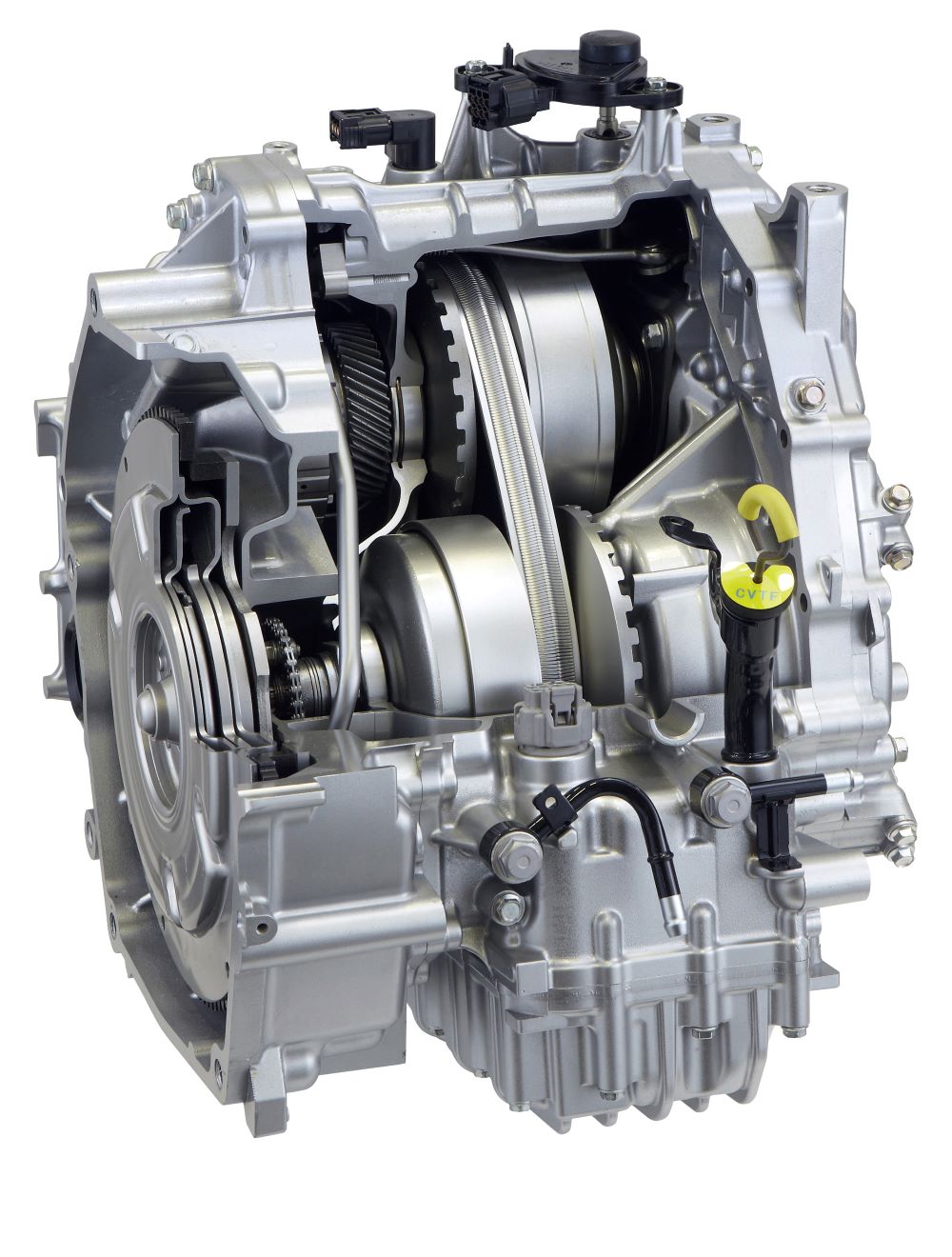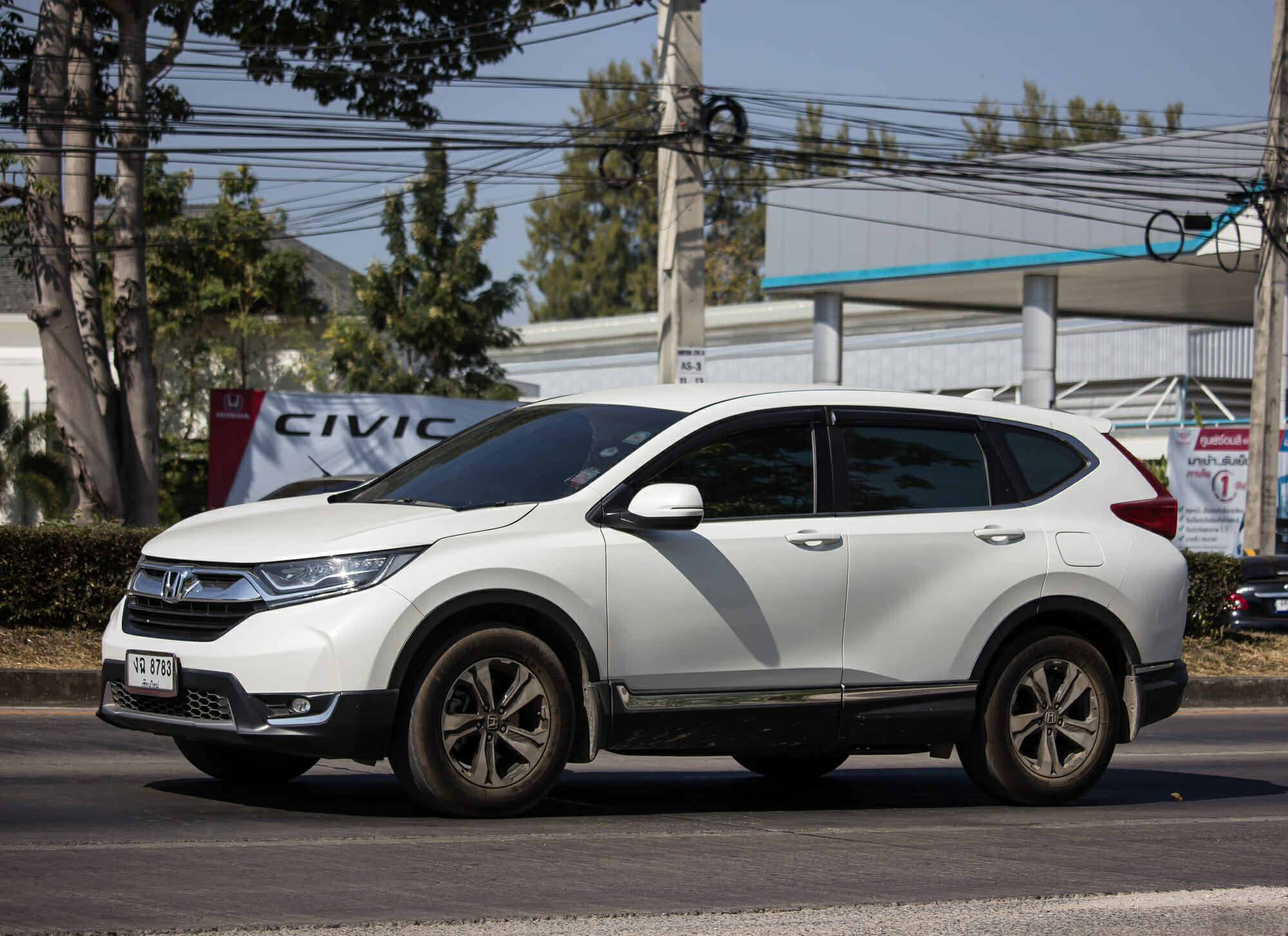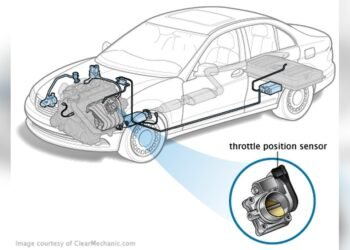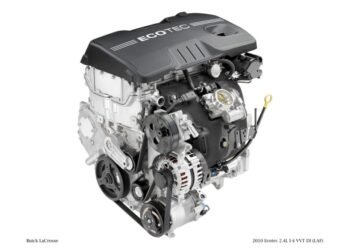Honda CRV transmission problems include issues such as transmission shuttering, rough shifting, slipping, and failure. These problems are common and may lead to costly repairs if not addressed promptly.
It is essential for Honda CRV owners to be aware of these potential transmission issues to prevent unexpected breakdowns and ensure the longevity of their vehicle. By understanding the common symptoms and being proactive in addressing any signs of transmission trouble, CRV owners can avoid significant inconvenience and expenses associated with transmission failure.
Regular maintenance and prompt attention to any transmission-related issues are key to ensuring a smooth driving experience with the Honda CRV.
Identifying Common Crv Transmission Issues
When it comes to the Honda CRV, transmission issues can be a cause of concern for many drivers. Identifying and understanding common transmission problems is crucial for maintaining the longevity and performance of your vehicle. Here, we will delve into the symptoms of transmission failure, slipping gears, and stalling that CRV owners should be aware of.
Symptoms Of Transmission Failure
Transmission failure in a Honda CRV can manifest in various ways, and it’s essential to recognize the warning signs early on. Some common symptoms of transmission failure include:
- Delayed engagement when shifting gears
- Unusual noises, such as whining or grinding
- Burning smell emanating from the transmission fluid
- Leaking transmission fluid underneath the vehicle
- Warning lights on the dashboard
Slipping Gears And Stalling
Another prevalent issue with CRV transmissions is slipping gears and stalling. This can be identified by:
- Abrupt or rough shifting between gears
- Loss of acceleration despite pressing the gas pedal
- Engine stalling when coming to a stop or while driving
- Overheating transmission due to excessive friction
Being vigilant about these symptoms and addressing them promptly can prevent further damage to the transmission and ensure a smoother driving experience with your Honda CRV.
Historical Perspective On Crv Transmission
Years With Notable Transmission Problems
The Honda CRV has had its fair share of transmission issues over the years. From the early 2000s to the late 2010s, several model years experienced significant transmission problems. Notable years with transmission issues include 2002, 2003, 2014, and 2015. These years were plagued with transmission failures, shuddering, and slipping, which led to a tarnished reputation for the CRV’s transmission system.
Evolution Of The Crv Transmission
When the Honda CRV was first introduced, it featured a traditional automatic transmission. However, as technology advanced, Honda began implementing continuously variable transmissions (CVT) in newer models. The CVT was designed to improve fuel efficiency and provide a smoother driving experience. Despite the initial promise, the CVT in some CRV models faced reliability issues and transmission failures, leading to customer dissatisfaction.
Technical Insights Into Crv Transmissions
Delving into CRV transmissions reveals prevalent Honda CRV transmission problems, including issues with slipping, rough shifting, and transmission failure. These concerns can lead to challenges like delayed engagement and potential transmission shuttering. Honda CRV owners should be aware of these common transmission issues for timely maintenance and repairs.
Cvt Technology Explained
The Continuously Variable Transmission (CVT) used in Honda CRVs is a type of automatic transmission that can seamlessly change through a continuous range of gear ratios. This makes it possible for the engine to operate at its most efficient level at all times, leading to better fuel economy. The CVT system in Honda CRVs uses a metal belt or chain that connects two pulleys, and the size of these pulleys can vary. The smaller the pulley, the higher the gear ratio, and vice versa. The CVT system adjusts the size of the pulleys continuously, allowing the engine to operate at the most efficient speed for any given driving situation.Role Of Torque Converter And Clutches
Unlike traditional automatic transmissions, CVT systems do not have a torque converter. Instead, they use a set of clutches to engage and disengage the transmission. The clutches work in a similar way to a manual transmission, allowing for better control and improved fuel efficiency. The torque converter in traditional automatic transmissions helps to transfer power from the engine to the transmission. In CVT systems, the clutches perform this task. The clutches work to engage the transmission when the driver accelerates and disengage it when the driver decelerates or comes to a stop. In summary, the technical insights into CRV transmissions reveal that the CVT system with metal belt or chain and the use of clutches instead of a torque converter provide better fuel efficiency and control. Understanding the role of these components can help drivers better maintain their Honda CRV and avoid potential transmission problems.
Credit: www.vehiclehistory.com
Consumer Experiences With Crv Transmissions
When it comes to owning a Honda CRV, some consumers have reported experiencing transmission issues that have caused frustration and concern. In this section, we’ll delve into the first-hand owner accounts, forum discussions, and common complaints related to CRV transmissions.
First-hand Owner Accounts
Many CRV owners have shared their first-hand experiences with transmission problems. Some have reported instances of sudden transmission failure, while others have encountered issues such as rough shifting, slipping, and delayed engagement. Additionally, there have been accounts of transmission shuttering, which has raised questions about the overall reliability of CRV transmissions.
Forum Discussions And Common Complaints
Online forums dedicated to Honda CRV owners have become platforms for discussions about transmission problems. Common complaints include concerns about transmission slipping, abnormal noises, and in some cases, complete transmission failure. Owners have expressed frustration over the unexpected costs associated with repairing or replacing CRV transmissions.
One of the recurring topics in these discussions is the lack of a torque converter in CRV’s CVT transmissions, which has been linked to issues during acceleration from a stop. Furthermore, some owners have sought advice regarding what they perceive as abnormal transmission behavior, such as slipping, and whether it is considered normal for CRV transmissions.
Overall, the consumer experiences with CRV transmissions highlight the need for thorough examination and potential improvements to ensure the reliability and longevity of Honda CRV transmissions.
The Cost Of Transmission Repairs
The cost of transmission repairs for Honda CRV transmission problems can vary depending on the extent of the issue. Common problems include transmission shuttering, rough shifting, and slipping, which may lead to transmission failure if not addressed promptly. It is essential to address these issues early to avoid costly repairs down the line.
Replacement Expenses
When it comes to addressing Honda CR-V transmission problems, the cost of replacement is a significant concern for many car owners. The expenses associated with replacing a transmission can vary widely depending on several factors such as the type of transmission, labor costs, and any additional repairs or parts needed.
Cost-benefit Analysis Of Repair Vs Replace
Before making a decision between repairing or replacing the transmission, it’s essential to conduct a cost-benefit analysis. Consider the cost of the repair, the remaining lifespan of the vehicle, and the potential for future transmission issues. Compare this with the cost of a transmission replacement and the overall value of the vehicle. This analysis can help car owners make an informed decision that aligns with their budget and long-term vehicle needs.

Credit: automotivelinks.co
Longevity Of Crv Transmissions
The longevity of CRV transmissions may be impacted by common Honda CRV transmission problems. Issues such as rough shifting, slipping, and transmission failure can occur, potentially affecting the lifespan of the transmission. Regular maintenance and prompt repairs can help mitigate these problems and extend the transmission’s durability.
Average Lifespan Expectations
Honda CRV owners often wonder how long they can expect their vehicle’s transmission to last. According to experts, a well-maintained CRV transmission can last up to 150,000 miles or more. However, the actual lifespan of a CRV transmission depends on various factors such as driving habits, maintenance, and the type of transmission.Factors Affecting Transmission Durability
The durability of a Honda CRV transmission can be affected by various factors. Here are some of the key factors to keep in mind:- Driving habits: Aggressive driving, such as sudden acceleration and hard braking, can put extra strain on the transmission and cause it to wear out faster.
- Maintenance: Regular maintenance, such as fluid changes, can help prolong the life of a CRV transmission. Neglecting maintenance can cause the transmission to fail prematurely.
- Type of transmission: Honda CRVs come with either a manual or automatic transmission. Automatic transmissions are more complex and can be more prone to failure if not maintained properly.
- Age and mileage: The older a CRV gets and the more miles it has, the more likely it is that the transmission will experience problems.
Investigating Honda’s Response To Issues
When it comes to Honda CRV transmission problems, it’s crucial to examine how Honda has addressed these issues. Let’s delve into the manufacturer’s actions, recalls, warranty, and customer service responses.
Recalls And Manufacturer Actions
Honda has initiated several recalls related to transmission problems in CRV models. These recalls are indicative of the manufacturer’s acknowledgment of the issues and their commitment to rectifying them. However, it’s essential for CRV owners to stay informed about these recalls and ensure that their vehicles are promptly serviced to address any potential transmission concerns.
Warranty And Customer Service Reactions
CRV owners experiencing transmission problems should be aware of Honda’s warranty coverage and the brand’s customer service reactions. Understanding the extent of warranty support for transmission-related issues is crucial for ensuring that any necessary repairs or replacements are handled appropriately. Additionally, CRV owners should assess the effectiveness of Honda’s customer service in addressing their concerns and providing satisfactory resolutions.

Credit: www.vehiclehistory.com
Preventive Measures And Maintenance Tips
When it comes to the longevity and performance of your Honda CRV, it’s crucial to stay proactive in preventing transmission problems. By incorporating routine checks, avoiding common mistakes, and adhering to proper maintenance, you can ensure the smooth operation of your vehicle’s transmission. Here are some essential preventive measures and maintenance tips to keep your Honda CRV transmission in top condition.
Routine Checks And Servicing
Regular maintenance is key to preventing transmission issues. Here are some routine checks and servicing tasks to keep your Honda CRV transmission in optimal condition:
- Check Fluid Levels: Regularly inspect the transmission fluid levels and ensure they are at the appropriate level.
- Fluid Replacement: Follow the manufacturer’s recommended schedule for replacing the transmission fluid.
- Filter Replacement: Periodically replace the transmission filter to prevent contaminants from affecting the transmission.
- Check for Leaks: Inspect for any signs of leaks or seepage from the transmission.
- Transmission Flush: Consider getting a professional transmission flush to remove any build-up or contaminants.
Avoiding Common Mistakes
There are common mistakes that can contribute to premature transmission problems. By avoiding these mistakes, you can extend the lifespan of your Honda CRV transmission:
- Overloading: Avoid overloading your vehicle, as it can put unnecessary strain on the transmission.
- Towing Excessively: If you tow with your CRV, ensure you stay within the recommended towing capacity to prevent transmission strain.
- Abrupt Gear Shifting: Smooth and gradual gear shifting can reduce wear and tear on the transmission components.
- Neglecting Maintenance: Stay proactive with regular maintenance and servicing to address any potential issues early on.
- Ignoring Warning Signs: Address any unusual noises, vibrations, or warning lights promptly to prevent further transmission damage.
Navigating Legal Solutions
When facing Honda CRV transmission problems, understanding your legal options is crucial. Navigating legal solutions can help you seek recourse for any issues you may be experiencing.
Lemon Laws And Consumer Rights
Lemon laws provide protection for consumers who have purchased a defective vehicle. If your Honda CRV is experiencing persistent transmission issues, you may be entitled to a refund or a replacement vehicle under lemon laws.
Class Action Suits And Legal Recourse
Class action suits can be an effective way to address widespread transmission problems with Honda CRVs. By joining a class action suit, you can seek legal recourse and potentially receive compensation for any damages incurred due to transmission issues.
Exploring Alternative Solutions
When faced with Honda CR-V transmission problems, exploring alternative solutions can provide cost-effective and efficient ways to address these issues. Rather than opting for traditional repairs, considering aftermarket fixes, upgrades, and community-driven solutions can offer innovative approaches to tackle transmission issues.
Aftermarket Fixes And Upgrades
Aftermarket fixes and upgrades can offer improved performance and durability for Honda CR-V transmissions. Consider upgrading to high-quality aftermarket parts to enhance transmission efficiency and longevity. Additionally, performance tuning and modifications can optimize transmission function and prevent common problems.
Community-driven Solutions
Engaging with the automotive community can provide valuable insights and solutions to Honda CR-V transmission problems. Online forums, social media groups, and local car clubs can offer expert advice, DIY repair guides, and recommendations for addressing transmission issues effectively. Collaborating with fellow Honda CR-V owners can lead to innovative solutions and shared experiences in resolving transmission problems.
Frequently Asked Questions
Do Crvs Have Transmission Problems?
Yes, some Honda CRVs experience transmission problems like slipping gears and stalling in certain models.
What Years Did Honda Have Transmission Problems?
Honda experienced transmission problems in various models, including the CR-V, from 2000 to 2019.
How Much Does It Cost To Replace A Honda Cr-v Transmission?
The cost to replace a Honda CR-V transmission can range from $1,800 to $3,500, including parts and labor. Prices may vary based on the model year and location. It’s recommended to get quotes from reputable mechanics for accurate pricing.
How Long Do Honda Cr-v Transmissions Last?
Honda CR-V transmissions can last up to 150,000 miles or more with proper maintenance and driving habits. However, some CR-V models have experienced transmission problems, including slipping gears and stalling. It is important to be aware of these issues and regularly check and service your transmission to ensure its longevity.
What Are The Common Honda Cr-v Transmission Issues?
Common Honda CR-V transmission issues include shuttering, rough shifting, slipping, and transmission failure.
Conclusion
Addressing Honda CR-V transmission problems is crucial for maintaining vehicle reliability. Awareness and timely maintenance can prevent costly transmission failures. Understanding common issues and symptoms is key to ensuring a smooth driving experience. Stay informed and proactive to avoid transmission-related inconveniences.















